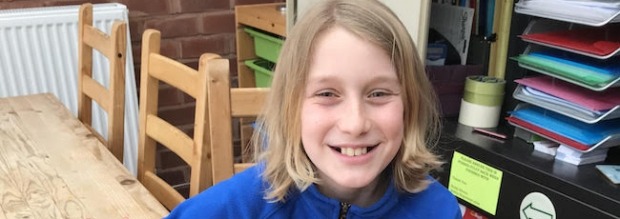
Carrie, Parent of a child with dyslexia and dyspraxia
My son is not severely dyslexic, but it’s enough to get in his way, and with the dyspraxia, he uses his whole arm when he writes by hand. If he’s writing neatly, he’s painfully slow. If he’s writing fast, you can’t read what he’s written.
We were very fortunate that he had a switched on primary teacher who called me in and showed me an example of his written work. She said you either have a very lazy six-year old or something else is going on here. The page she handed me was full of mirrored letters, words with no gaps, and no punctuation. He was screened by the school and they also identified executive processing as a significant issue, even though his cognitive ability is in the 98th percentile.
I’m a learning professional so I asked myself, how can I help him do better, because he needs to be able to write when he gets to high school. We started doing a number of different things, and one of those was learning touch-typing with TTRS.
I was looking for something to help a child who learns best with visual support, and this program was recommended to me. Having the hand and finger guide on the screen showing which keys to press, really worked for him. TTRS was easy for my son to navigate and he could go at his own pace. I also liked that he could do one module in ten to fifteen minutes. It made it easy to fit in regular practice sessions.
Having the sounds there to accompany the visualization helped with decoding in reading and because the program gives you a score out of 100, he could repeat modules until he felt really good about his work.
We didn’t necessarily choose TTRS to help with spelling, but that was the cherry on top. After using Touch-type Read and Spell and a few other programs at primary level, his spelling is now where it should be for his grade level. He still has dyslexic spelling tendencies, but they’re not holding him back anymore and when he writes on the computer he gets access to spell-checkers too.
In terms of writing at school, before he could take notes on the computer, copying off the board by hand was almost impossible for him. Because of his executive processing issues, he’d be reading, would look down to write the next letter, look back up, and have lost his place. Most of his lessons were so excluding for him, because they were playing to his weakness.
This year we managed to get him a laptop in high school and it has just been transformational for him. He’s gone from being a Year 7 who was quite down on himself about school, constantly playing catch up, never quite finishing anything and always getting moaned at by his teachers, to a confident young learner who is switched on and engaged in class – and actually ahead of most of his classmates!
The typing has really helped him reach his full potential and as a parent it’s been so powerful for me to be able to go into school meetings with teachers and SEN coordinators and be confident when I say: Actually, he can keep up. He’s done the TTRS course and if you give him access to a laptop in class, he can type.
For my son, who finds writing physically painful and mentally quite difficult, being able to touch-type has been what works for him. In regards to TTRS, it ticks all of the boxes. It’s online, easy to access, fairly priced and has the added benefit of supporting reading and spelling skills too. My daughter has dyslexia and we’re looking forward to getting her started on the program next!



